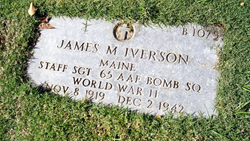|
Memorial Day is when our nation honors and mourns those who died while serving in the United States Armed Forces. One out of nine Mainers served during WWII. Out of those nearly 100,000 veterans, only 3,400 were still alive in 2020, and their ranks have declined to fewer than  2,000 today. As the “Greatest Generation” fades into the mists of time, they take with them the stories of incredible sacrifice by the 2,156 service members from Maine who were casualties of that war. We honor those who died with a parade, ceremony, and flags by their gravestones. It is also fitting that we recall their stories. This year, we remember the story of Staff Sergeant James Martin Iverson who was killed in action eighty years ago. 2,000 today. As the “Greatest Generation” fades into the mists of time, they take with them the stories of incredible sacrifice by the 2,156 service members from Maine who were casualties of that war. We honor those who died with a parade, ceremony, and flags by their gravestones. It is also fitting that we recall their stories. This year, we remember the story of Staff Sergeant James Martin Iverson who was killed in action eighty years ago.
James was born in Salisbury, Massachusetts, in November 1919. His parents were Martin Hanson Iverson Jr and Mary Emily Sweeney. His family was living in Rockingham, N.H. while his father worked at a shipyard. Martin was born and died in Falmouth, the son of émigrés who fled the Danish Province of Schleswig after it was seized by Austria and Prussia. Falmouth saw a surge of Danish immigrants during the second half of the 19th century due to that war.
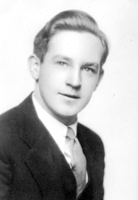 By 1930, the Martin Iverson and his family had returned to Falmouth and were living at Falmouth Corner; he was working as a mason. James attended Falmouth High School where his extracurricular activities included band, the school play, and a variety of sports (of which skiing was his favorite). He graduated in 1938. By 1930, the Martin Iverson and his family had returned to Falmouth and were living at Falmouth Corner; he was working as a mason. James attended Falmouth High School where his extracurricular activities included band, the school play, and a variety of sports (of which skiing was his favorite). He graduated in 1938.
One year later he enlisted in the US Army Air Corps and signed up for overseas service. He reported to Fort Slocum, N.Y. for several weeks of initial processing after which he sailed for Hawaii. He completed his training there, and a year later was a corporal assigned to the 72d Bombardment Group (Heavy) at 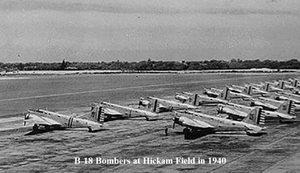 Hickam Airfield. His squadron was equipped with the B-18 “Bolo” bomber based on the Douglas DC-2 airliner. The B-18 lacked the armor, payload, or range of the B-17 and was consigned to overseas squadrons including those in Hawaii and the Philippines. Hickam Airfield. His squadron was equipped with the B-18 “Bolo” bomber based on the Douglas DC-2 airliner. The B-18 lacked the armor, payload, or range of the B-17 and was consigned to overseas squadrons including those in Hawaii and the Philippines.
James was promoted to sergeant by early 1941. He was at Hickam (which is adjacent to Pearl Harbor Naval Base) during the Japanese attack on December 7, 1942. He came through unscathed, but most of his squadron’s aircraft were destroyed. Following Pearl Harbor, his squadron moved across Oahu to Bellows Airfield and began receiving B-17s and replacement B-18s. His squadron, along with the other squadrons in the 5th Bombardment Group (Heavy) conducted patrols over the Pacific Ocean near Hawaii.
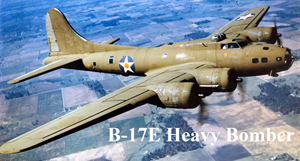 In August 1942, the 72d Squadron was sent to Espiritu Santo in the South Pacific to support the Battle of Guadalcanal, but James had already been transferred to the 65th Bombardment Squadron (Heavy) in Australia. He arrived “down under” by August and caught up with his new squadron in Queensland (in the upper northeast corner of Australia). The 65th Squadron operated from several airfields in Queensland (Torrens Creek, Iron Range, and Mareeba) before crossing the Coral Sea to Port Moresby, Papua, where they operated from Jackson Airfield (also known as “7 Mile Drome”). In August 1942, the 72d Squadron was sent to Espiritu Santo in the South Pacific to support the Battle of Guadalcanal, but James had already been transferred to the 65th Bombardment Squadron (Heavy) in Australia. He arrived “down under” by August and caught up with his new squadron in Queensland (in the upper northeast corner of Australia). The 65th Squadron operated from several airfields in Queensland (Torrens Creek, Iron Range, and Mareeba) before crossing the Coral Sea to Port Moresby, Papua, where they operated from Jackson Airfield (also known as “7 Mile Drome”).
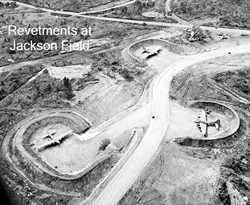 Why did the Army Air Corps establish bases at Port Moresby? In the months following Pearl Harbor, Japan expanded its control over the Southwest Pacific with its occupation of the Philippines, Dutch East Indies, and New Guinea. Pushing southeast into the Solomon Islands, Japan was isolating Australia as a precursor to invasion. Japan had not captured Port Moresby in the Australian-controlled Territory of Papua on the island of New Guinea. Attacks overland were repelled by outnumbered Australian forces. An attack from the sea was spoiled when the invasion fleet was damaged in the Battle of Coral Sea. Meanwhile, US forces landed on Guadalcanal in the Solomon Islands, capturing a nearly completed Japanese airfield and quickly putting it into operation. Why did the Army Air Corps establish bases at Port Moresby? In the months following Pearl Harbor, Japan expanded its control over the Southwest Pacific with its occupation of the Philippines, Dutch East Indies, and New Guinea. Pushing southeast into the Solomon Islands, Japan was isolating Australia as a precursor to invasion. Japan had not captured Port Moresby in the Australian-controlled Territory of Papua on the island of New Guinea. Attacks overland were repelled by outnumbered Australian forces. An attack from the sea was spoiled when the invasion fleet was damaged in the Battle of Coral Sea. Meanwhile, US forces landed on Guadalcanal in the Solomon Islands, capturing a nearly completed Japanese airfield and quickly putting it into operation.
Japan had established a major base at Rabaul on the island of New Britain and within bomber range of Guadalcanal. Aircraft and ships from Rabaul began a sustained effort to resupply and reinforce the Japanese defense of Guadalcanal as well as attacking US forces in the Solomons.
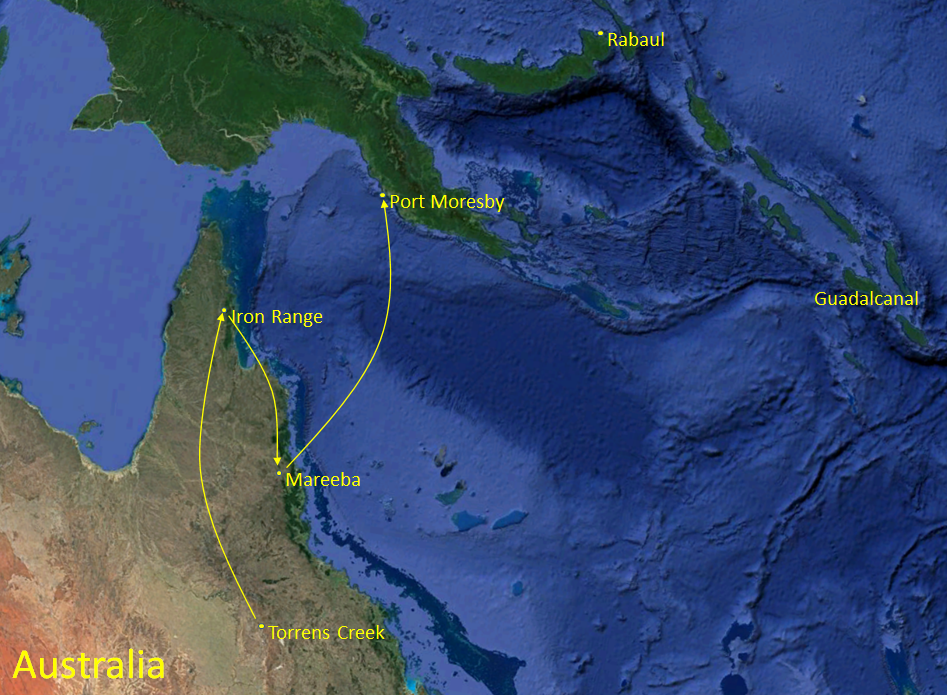 Rabaul was within bomber range of Port Moresby. Army Air Force squadrons newly arrived in Australia were deployed to Port Moresby to attack Japanese ships and facilities at Rabaul. The Japanese base was well-defended; these were dangerous missions essential to keeping the Japanese from overwhelming the US forces clinging to Guadalcanal. Rabaul was within bomber range of Port Moresby. Army Air Force squadrons newly arrived in Australia were deployed to Port Moresby to attack Japanese ships and facilities at Rabaul. The Japanese base was well-defended; these were dangerous missions essential to keeping the Japanese from overwhelming the US forces clinging to Guadalcanal.
On the morning of December 2, 1942, B-17 # 41-9194 took off from Jackson Airfield with a crew of nine. It was flown by 1st Lieutenant Robert Freeman and 2nd Lieutenant Clinton Smith. The navigator was 2nd Lieutenant was Harry Moy. The flight engineer was Staff Sergeant James Iverson. He also served as the upper turret gunner when the aircraft was attacked by fighters.
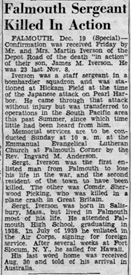 Returning from its mission, the aircraft abruptly turned and crashed into a hill while on its final approach to Jackson Field. All nine members of the crew were killed. According to a observer, the B-17 went into a steep wing level glide and crashed in the Moitaka area of Port Moresby. The angle of the crash was estimated to be about 35 degrees down and was so abrupt that concentrated debris didn't show much evidence of the cause. Returning from its mission, the aircraft abruptly turned and crashed into a hill while on its final approach to Jackson Field. All nine members of the crew were killed. According to a observer, the B-17 went into a steep wing level glide and crashed in the Moitaka area of Port Moresby. The angle of the crash was estimated to be about 35 degrees down and was so abrupt that concentrated debris didn't show much evidence of the cause.
Available records do not describe the nature of the mission or whether aircraft 41-9194 was damaged on that or previous missions.
The crew’s remains were interred at the US Air Corps cemetery in Ipswich, near Brisbane, Australia. In January 1949, James Iverson was repatriated to the National Memorial Cemetery of the Pacific in Honolulu, Hawaii.
On Memorial Day in 1943 in a ceremony at Pine Grove Cemetery, the Army Air Corps presented James’ father, Martin Iverson, with the Distinguished Flying Cross awarded to James for “extraordinary achievement while participating in aerial flights in the Southwest Pacific.” James had previously received the Purple Heart Medal for wounds received in combat.
|




 By 1930, the Martin Iverson and his family had returned to Falmouth and were living at Falmouth Corner; he was working as a mason.
By 1930, the Martin Iverson and his family had returned to Falmouth and were living at Falmouth Corner; he was working as a mason. Hickam Airfield.
Hickam Airfield. In August 1942, the 72d Squadron was sent to Espiritu Santo in the South Pacific to support the Battle of Guadalcanal, but James had already been transferred to the 65th Bombardment Squadron (Heavy) in Australia.
In August 1942, the 72d Squadron was sent to Espiritu Santo in the South Pacific to support the Battle of Guadalcanal, but James had already been transferred to the 65th Bombardment Squadron (Heavy) in Australia. Why did the Army Air Corps establish bases at Port Moresby?
Why did the Army Air Corps establish bases at Port Moresby?
 Returning from its mission, the aircraft abruptly turned and crashed into a hill while on its final approach to Jackson Field.
Returning from its mission, the aircraft abruptly turned and crashed into a hill while on its final approach to Jackson Field.
